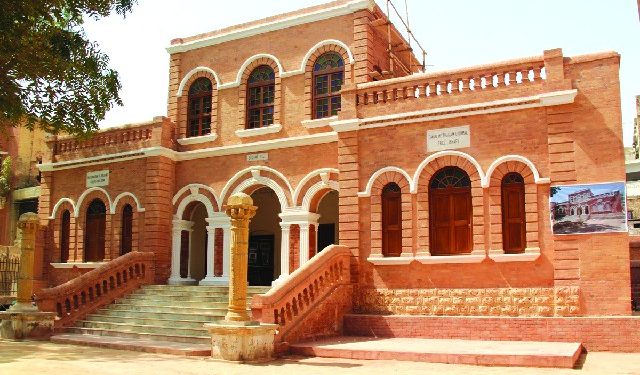
Built in early 20th century, Annie Besant Hall was an ideal place for educational, social, cultural and political activities – especially when Besant herself started the Home Rule Movement.
Zaffar Junejo
The defeat of Sindh’s Talpur Mirs on the 17th of February 1843 at the hands of colonial forces sealed its future within the British Empire. Later, being part of the Bombay presidency, Sindhis realized that their towns in comparison with Bombay, Calcutta and London were socio-culturally stagnant. The sense of backwardness was so dominant that in 1870, the Education Department’s textbook for class three Sindhi contained a lesson entitled Bombay and Hyderabad, which stated that Bombay was a trading city, had a busy port, diversified population and global connectivity but Hyderabad had neither trade nor was it strategically located. In other words, there was a sense of backwardness. The connectivity and awareness also narrowed the space for religious-social movements which were active to revive Indian traditions, and most of them except Sindh Sabha were inclusive. Soon, modern communications, economic-oriented projects and related institutions opened new vistas for Sindh. On the other hand, advanced ideas also come in to replace traditional thoughts and untested ideas.
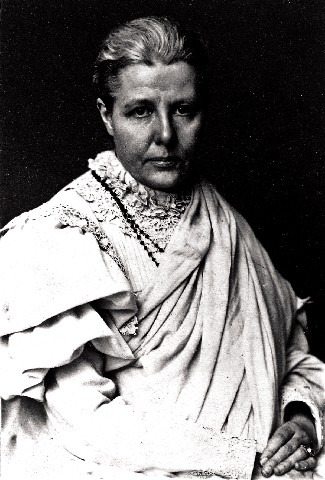
Later in 1896, the Theosophical Society took its initial steps, and became popular among Hindus, Muslims and Christians. The Society was founded by Madame H. P. Blavatsky and Colonel Henry Olcott in New York in 1875. In 1882, its headquarters were established in Adyar, Madras (Chennai) in India. Its message combined mysticism and spiritualism. However, its ideas were influenced by Hindu thoughts and Buddhism, and blended with metaphysics. It promoted ‘brotherhood’ and ‘unity’. Later, the Indian National Society (of Theosophy) was chartered on the 1st of January, 1891. The Karachi Theosophical Society was established on the 21st of December, 1896.
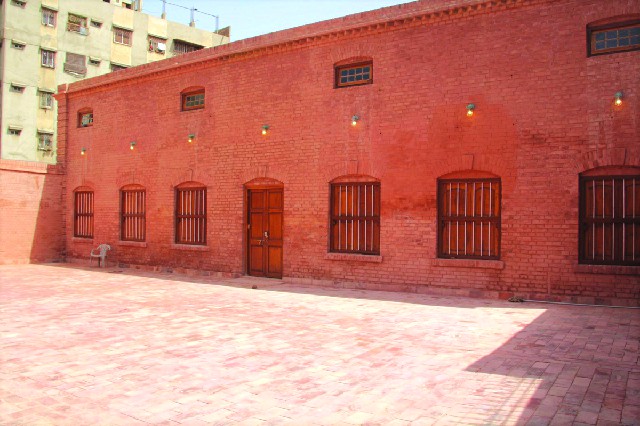
Old Hyderabadis still happily recount an interesting story about the acquisition of a plot for the construction of Annie Besant Hall. It goes like this: in 1900, Annie Besant wrote to Colonel Alcot (Garrison Command Officer, Hyderabad) for the plot. Colonel Alcot, being himself a Theosophist approved the application, and a plot measuring 1,805.2 square yards was allocated without any cost. Presently, it is spread over 16,781.309 square feet, and the main building’s covered area is 446 square feet. Annie Besant Hall exits in ‘F’ ward of the city, having the city survey number 1362, and is situated on the Miran Muhammad Shah Road.
In Theosophy’s global agenda, 1901 was the most active year. Its top leadership lectured in various countries. In the same year, Annie Besant visited 18 Indian towns, and with the assistance of Miss Edger opened 27 Lodges. The foundation stone of Annie Besant Lodge/Hall Hyderabad was laid on the 26th of February, 1901. The building consisted of a main hall then, and a bride room/guest room was added in 1931. Mr. Ishtiaq Ansari, Regional Director, Endowment Fund Trust for Preservation of the Heritage of Sindh (EFT), told this scribe that the main door was built on the principle of Roman architecture. He was, however, of the view that other doors and windows of the hall were designed on the lines of Tudor architecture. Over the period, Annie Besant Lodge, Hyderabad, along with Karachi Theosophical Society, became one of the active lodges and societies of India. Prior to Partition in 1947, Hyderabad city’s popular public places were the Homestead Hall and Annie Besant Hall. The Homestead Hall was located in the old part of the city, which was congested and its lanes were also narrow. On the other hand, the newly constructed Annie Besant Hall’s surroundings were convenient and spacious. It was also adjacent to the Hyderabad Cantonment, Saddar Bazaar and Hirabad. There are several first-person accounts that have mentioned how early morning and evening walks in Hirabad were considered fashionable and trendy. In the evening cool breeze, group of young women with long hanging hair tied in different styles – braids, bund and coiffure – and their gleeful laughter used to create an aesthetically pleasing effect in Hirabad. It is no wonder that Rabindranath Tagore called Hyderabad the most fashionable city in all of India. On a related note, Shikarpur’s global trade network was being replaced by Hyderabad-based ‘Sindhworkies’ (wealthy Sindhi Hindu merchants with far-flung business interests around the world). By the 1920s, Sindhworkies’ monthly remittances received in Hyderabad were Rs.700000 to Rs.800000. Therefore, along with the most fashionable city, it also became the most modern city.
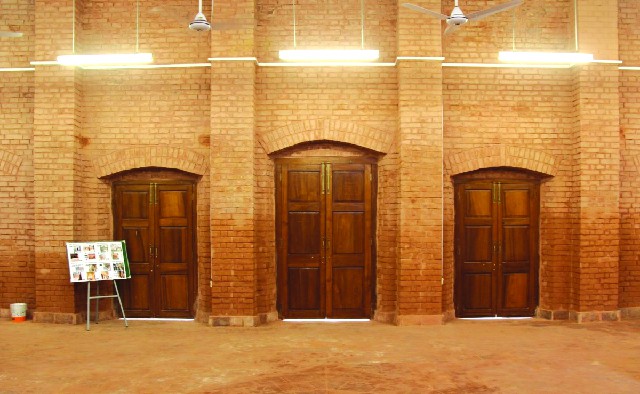
One could say that that Annie Besant Hall became an ideal place for educational, social and cultural, and political activities, especially when Besant herself started the Home Rule Movement. The movement became popular quickly because the branches of National Theosophical Societies supported the cause. In addition to that, the ideas of the Home Rule Movement were based on self-government, revival of Indian culture, upholding of national pride, and also urging people to struggle against the British rule because it was alien, illegitimate and against the interests of the vast majority of the people.
Some Sindhi politicians were also Theosophists – and all of them were regular attendees of Annie Besant Lodge, Hyderabad and the Theosophical Society, Karachi. The most prominent were Ghulam Muhammad Bhurgri, G. M. Syed, Seth Vishandas and Hyder Bakhsh Jatoi
It is generally believed that the 1930s was the era of ‘Cultural Nationalism’ in India with slogans such as ‘Not only buy Indian but be Indian’. It is also accepted that the Theosophical Society made a major contribution towards this realization. The Society was very prominent and active in India with as many as 262 lodges throughout the country in 1936. At that time, there were a total of 1,203 lodges worldwide. Another technique used by the Theosophical Societies to dent British superiority was the promotion of local mother tongues. In addition to that, colleges of higher education were also established to promote ‘national character.’
The Theosophical Year Book, 1938 shows Annie Besant’s visits to India. She first came to Sindh in 1896, and then visited again on various occasions. She also came to Hyderabad in 1917 and 1919. In fact, she laid the foundation of a college on the 1st of October 1917 which was named Sindh National Arts College, Hyderabad. (Over the period, it has got different names.) It must be noted that at that time she was also associated with the National Education Movement. The movement promoted art, dance and singing as ‘divine ideas.’ Later, a successful attempt was made to promote local mother-tongues through lodges so that more women could be part of the movement. Some journals were published in the vernaculars. Perhaps, it was in this connection that the Karachi Theosophical Society published Achcho Kanwal (White Lily) in Sindhi language. Later, in 1923, Persram Jethmal issued monthly Roh Rehann with the purpose of promoting the ideas of Theosophy, and soon many Sindhi writers and educationists wrote articles to promote Theosophical ideas. Mukhtiar Mallh in his recently published book Adabi Socitian Jo Sindhi IlmA eenAdab Ji Tarqi MeenKirdar (The Role of Literary Societies in the Development of Sindhi Knowledge and Literature) has listed educationists and writers who were theosophists and promoted such thought. Some of them were: Jethmal Parsram Gulrajani, Pahlajrai Lilaram Vaswani, Lalchand Amardinomal Jagtiani, Nadir Baig Mirza and Jagatrai Esardas Shodani.
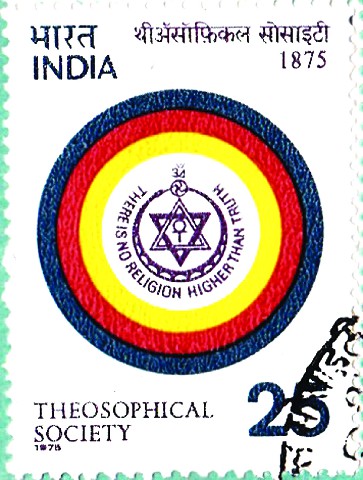 In addition to writers, some Sindhi politicians were also Theosophists – and all of them were regularly attendees of Annie Besant Lodge, Hyderabad and the Theosophical Society, Karachi. Among the list, the most prominent were Ghulam Muhammad Bhurgri, G. M. Syed, Seth Vishandas and Hyder Baksh Jatoi. Presently, no comprehensive membership list of Theosophical Societies and Lodges exits. However, this scribe has prepared a list containing the names of 41 individuals who were very active in Theosophical lodges of Hyderabad, Sukkur and Larkana from 1901 to 1938. Till the Partition of India, Theosophical Societies and Lodges were non-denominational centers of intellectual and cultural activities. It must be mentioned that after partition, Annie Besant Lodge, Hyderabad was protected by Muhammad Ibrahim Joyo, S. M. Saeed, Dr. Shamas Abbasi (aka Apa Shamas), Dadi Leelawati Harchandani (aka Dadi Leelan) Ibrar Kazi, Professor Aijaz Qureshi, Zaffar Ahmed, Rehan Ahmed and Kamlesh Kirplani.
In addition to writers, some Sindhi politicians were also Theosophists – and all of them were regularly attendees of Annie Besant Lodge, Hyderabad and the Theosophical Society, Karachi. Among the list, the most prominent were Ghulam Muhammad Bhurgri, G. M. Syed, Seth Vishandas and Hyder Baksh Jatoi. Presently, no comprehensive membership list of Theosophical Societies and Lodges exits. However, this scribe has prepared a list containing the names of 41 individuals who were very active in Theosophical lodges of Hyderabad, Sukkur and Larkana from 1901 to 1938. Till the Partition of India, Theosophical Societies and Lodges were non-denominational centers of intellectual and cultural activities. It must be mentioned that after partition, Annie Besant Lodge, Hyderabad was protected by Muhammad Ibrahim Joyo, S. M. Saeed, Dr. Shamas Abbasi (aka Apa Shamas), Dadi Leelawati Harchandani (aka Dadi Leelan) Ibrar Kazi, Professor Aijaz Qureshi, Zaffar Ahmed, Rehan Ahmed and Kamlesh Kirplani.
A principle applies to membership organizations that with dwindling membership, the organization merely becomes a structure rather than a living organization. After the Partition, Annie Besant Lodge witnessed a similar fate because a lot of its members migrated to India. Some literary activities were carried out on the premises in post-partition decades, but it never gained the old status. The worst decade was the 1990s, when its library and reading hall were set on fire in ethnic riots by a mob. Later a group of people associated with a certain political party also tried to get hold of the building, but it was prevented. In 1997, the Besant Hall was renovated with the financial assistance of Mahtani Foundation, Karachi and Mr. Kausar Bhatti. Again, the land mafia became a new threat for the Annie Besant Lodge. The situation became so grave that some professors of Sindh University, led by the late Jawaid Bhutto and late A. R. Nagori joined hands in protest. In the larger public interest, they raised the issue on various forums. Apart from these efforts, a delegation representing the Annie Besant Lodge also met with the Mayor of Hyderabad and thereafter the Hall was declared a national heritage site.
The people of Sindh at large and the citizens of Hyderabad have always worried about the future of Annie Besant Lodge. Their concern revolves around two areas: land mafia/builders threats, and continued decay of the building due to seepage and moisture. In this regard, the EFT and Theosophical Society/Annie Besant Lodge entered into an agreement in April 2019 for the preservation and management of the building. Mr. Ishtiaq Ansari said the EFT has followed international standards of preservation, and has assured that techniques or material used would not damage the original beauty of the building. He showed this scribe some photos taken after the efforts for preservation of Annie Besant Lodge. The work is evidence of the team’s dedication and technical expertise. However, a skeptic may wonder about the actual usage of the building. The same concern was also raised before Mr. Ishtiaq Ansari, who said that the hall would be used for literacy and cultural activities, and some research facilities would also be provided to scholars. Let us hope that EFT’s labor will prove a gleam of sunshine and bring a fruitful cultural encounter with its own past for Sindh.
__________________
 Dr. Zaffar Junejo has a Ph.D. in History from the University of Malaya. His areas of interest are post-colonial history, social history and peasants’ history.
Dr. Zaffar Junejo has a Ph.D. in History from the University of Malaya. His areas of interest are post-colonial history, social history and peasants’ history.
Courtesy: The Friday Times Lahore